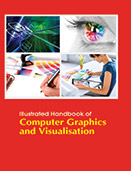Computer Science

In the world of digital age, computer-generated graphics are ubiquitously – television, movies, weather reports, games, architecture, business forecasts, and in all kinds of medical procedures. Computer graphics can mimic things that do not hitherto exist, and can depict places that are invisible, like as internal structures in a human body. Associated fields include scientific and information visualization, image processing, and computational geometry. Applications of computer graphics include animation, special effects, computer-aided design and digital art. Computer visualization is a powerful tool for architects, who use visualization technique as design evaluation, presentation, education, and, research tools. Visualization has always been the permanent part of the discipline, though it fluctuates in the wide range of 2D drawings to 3D modeling, rendering, animation, walk-through, and full-scale immersive/virtual environments. Most of the visualization tools are used for presentation, where the sole aim is to produce ‘visually appealing’ pictures.
Illustrated Handbook of Computer Graphics and Visualisation is a comprehensive introduction to visual computing, dealing with the modeling and synthesis of visual data by means of computers.
The two basic issues in the past in computer graphics and visualisation, have been Modelling, i.e. capturing and representing the geometry and topology of computer-generated objects, and Rendering, which is the process of generating a realistic image from such models. Although amazing advances have been made in both these domains, research is still extremely active as the quest for true realism, and not just photorealism, continues. Increasingly, extremely large 3D datasets or models are required and the level of accuracy, and hence the complexity, of such models is growing dramatically.
Addressing a wide variety of applications of data visualizations, Illustrated Handbook of Computer Graphics and Visualisation explores the range of problems that can be tackled by such methods, and emphasizes the strong connections between visualization and related disciplines.
It is true that the scientific methodology of computer graphics can be formed partly by inheriting guidelines, methods and frameworks from other interrelated disciplines. To some extent, this has also been done, but this needs to be an ongoing process. The computer graphics community would benefit from discussing methodological issues more often to clarify the nature of the discipline and provide a powerful framework for the scientific work within all areas of the field.